History Of Western Leather Furniture
The History of Western Leather Furniture and Its Popularity in Texas
Imagine a piece of naturally-colored leather furniture, the rich texture and a smooth yet slightly rugged surface inviting you to touch. As your hand glides over the surface, the leather yields slightly to your touch, making that unmistakable and satisfying creak of fine leather, and you cannot help but indulge yourself. Such is the allure of western leather furniture.
Leatherwork, an Ancient Craft
Leather has been cherished for thousands of years, first used for clothing, armor, and even as shelter among nomadic tribes. The process of turning raw animal hides into supple, workable leather has always been an intricate craft. Ancient artisans developed techniques for dyeing, sewing, and upholstering leather, making it a highly sought-after material.
From Elite Luxury to Everyday Essential
Due to the labor-intensive methods required for its production, leather was once reserved for the elite, serving as a symbol of prestige and refinement. But these days, leather is a widely used material for various consumer goods, such as shoes, bags, belts, and furniture. In this blog, we will dive into the history of western leather furniture and why it remains so popular in Texas.
If you’re in Fort Worth, TX, and looking for the perfect western leather furniture for your home or ranch, feel free to browse our collection. At Runyon’s Fine Furniture, we specialize in expertly crafted, custom options for western sofas, chairs, sectionals, and many different styles of furniture that bring luxury and durability to your western home.
Early History
Western leather furniture traces its roots back to Spanish settlers in the Americas. The Spanish, and later Mexican, vaqueros (cowboys) heavily relied on leather, not just for saddles and tack, but also for home furnishings.
During the American Frontier and Cowboy Era, pioneers heading westward embraced leather furniture for its resilience and rustic aesthetic. Ranches and homesteads in Texas, New Mexico, and Arizona commonly featured cowhide chairs, settees, and barstools. Leather dining chairs became especially popular, as they were easy to clean and resistant to absorbing food odors.
Refined Western Style for Your Ranch Bedroom
Modern Ranch Bedroom Collection
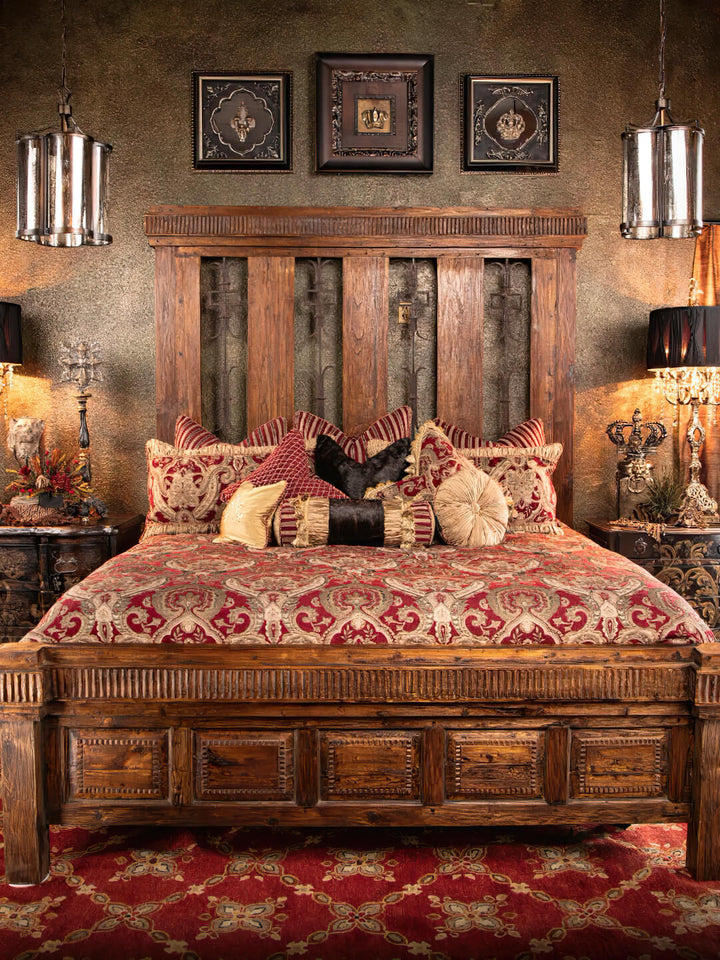
Sophisticated Seating for Dining or Living Rooms
Western Dining Chairs
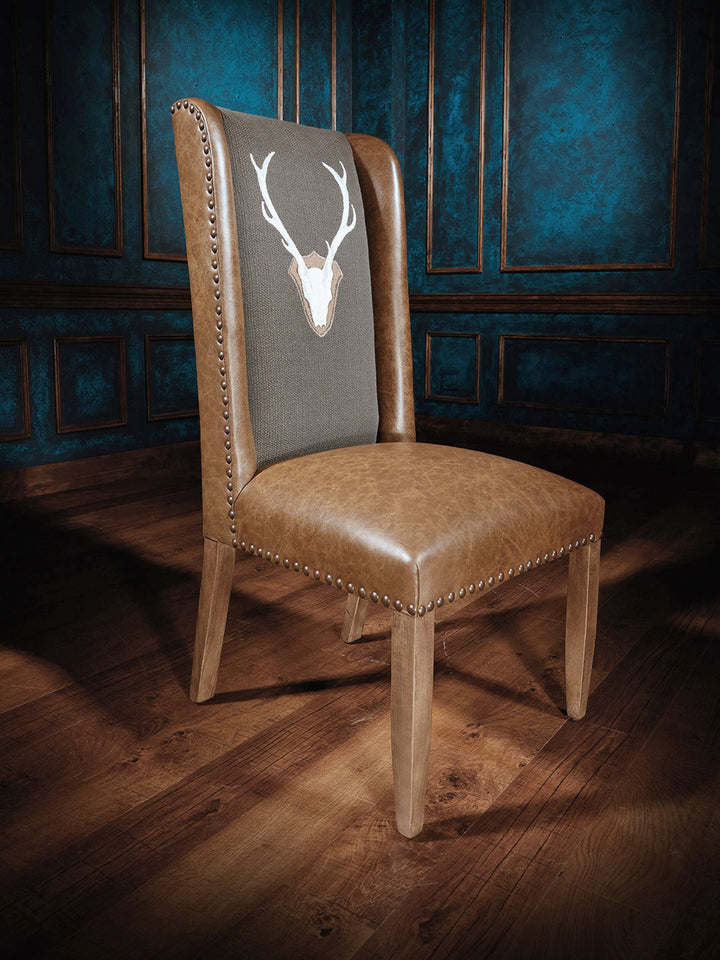
Advancements in Tanning During the Industrial Revolution
The Industrial Revolution ushered in significant advancements in leather tanning, making it more accessible and diverse in finish. A major breakthrough was the development of chromium salt tanning in the mid-to-late 19th century, replacing the traditional vegetable tanning process.
Chrome tanning was invented in 1858 by German technologist Friedrich Knapp and Swedish scientist Hylten Cavalin. However, American chemist Augustus Schultz patented the process using chromium salts in 1884, which allowed for softer and more colorful leather ideal for upholstery.
While vegetable tanning remained dominant initially, chromium tanning became the industry standard for upholstery by the early 20th century. The post-WWII era saw an explosion in the mass production of western leather furniture due to chromium tanning’s ability to create durable leather in various finishes.
Thomas Molesworth: A Legacy of Modern Western Furniture
Thomas Molesworth, a Wyoming-based furniture maker, played a crucial role in defining the western rustic furniture style that we know today. From 1931 to 1961, his workshop in Cody, Wyoming, produced handcrafted pieces that blended western aesthetic with artistic sophistication.
Molesworth’s clientele included some of the most influential figures of his time. Impressed by his work, newspaper publisher Moses Annenberg commissioned 245 pieces for his Wyoming ranch. His work found a place in the Rockefeller ranch in Jackson, Wyoming, and even President Eisenhower’s home in Pennsylvania.
Molesworth’s signature style blended hand-tooled leather upholstery with intricate designs. He used natural materials like lodgepole pine, burled wood, and brass nailhead accents, with motifs inspired by cowboy and Native American cultures featuring bison, cowboy scenes, and tribal patterns. His use of bold colors like deep reds, blues, and earthy browns mirrored the rich hues of the western landscape.
Even today, the demand for his original pieces remains very high. At a Sotheby’s auction in 2018, many of his creations sold for prices exceeding their anticipated bids. Similarly, at a Christie’s auction in 2012, a pair of original Molesworth club chairs fetched an impressive $80,500.
Western Comfort with Hand-Tooled Leather
Red Swivel Chair Collection
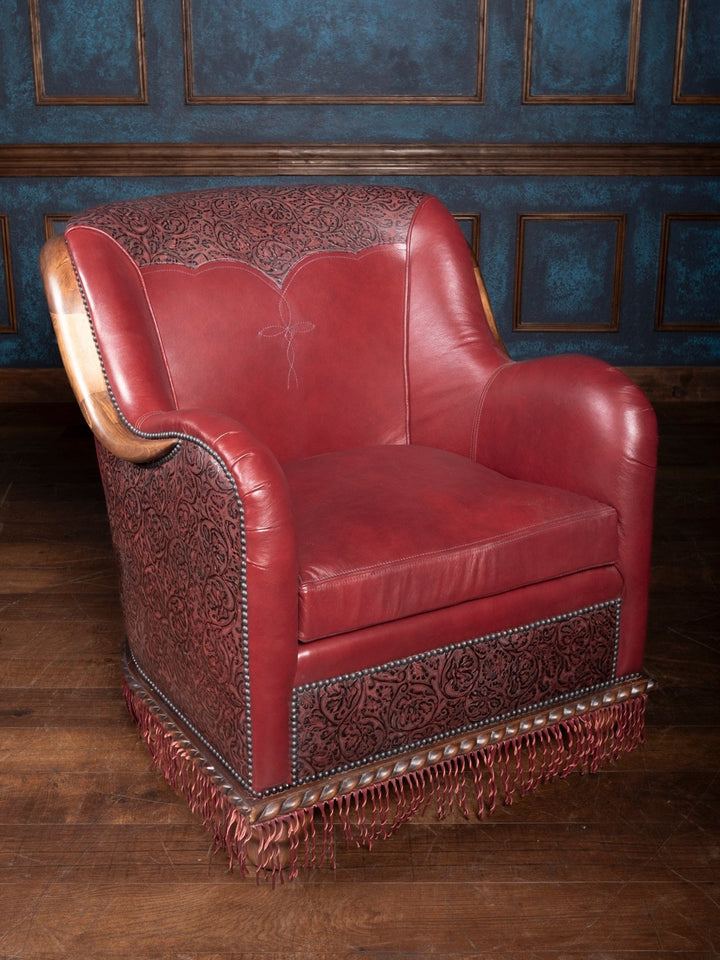
Heirloom-Quality Leather Sofas with Unique Styles
Western Leather Sofas
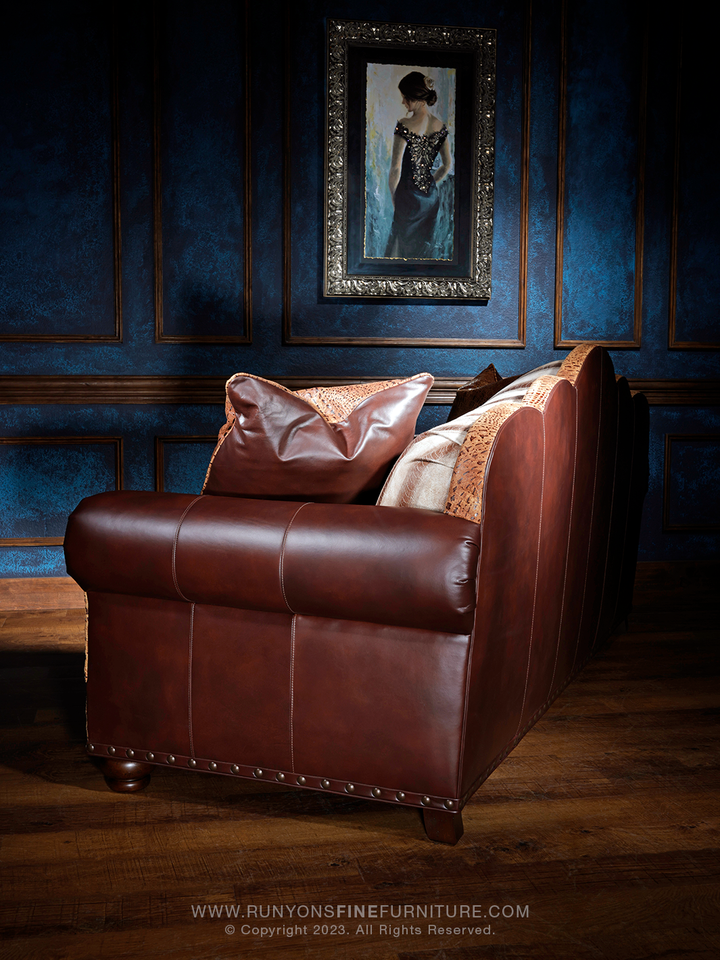
Late 20th Century to the Present Day
After Molesworth, western-style furniture evolved in two directions, handcrafted high-end pieces using traditional techniques and natural materials, and mass-produced commercial furniture. Artisans continue to honor Molesworth’s tradition, emphasizing handmade techniques in western-style homes, particularly in Texas, Montana, and Wyoming.
Meanwhile, commercial brands have adapted rustic aesthetics for mainstream appeal using faux materials with traditional features like distressed leather, nailhead trim, and cowhide patterns. However, traditional methods produce heirloom-quality bespoke pieces that are true investments because the leather gets better with age and the hardwood frames are built to last for generations. As interior design trends evolved, western leather furniture designs adapted in several ways.
Rustic Yet Contemporary
Many modern designs merge western aesthetics with contemporary styles, incorporating farmhouse and industrial influences to create a fresh yet timeless look. We see sleek sectionals and accent chairs upholstered in distressed or full-grain finishes with reclaimed wood frames. Metal accents contrast beautifully with the softness of leather. Designers also incorporate Italian leather and custom upholstery, adding a refined touch to the ruggedness of western furniture.
Rustic Farmhouse Charm for a Contemporary Ranch
Modern Ranch Living Room Collection
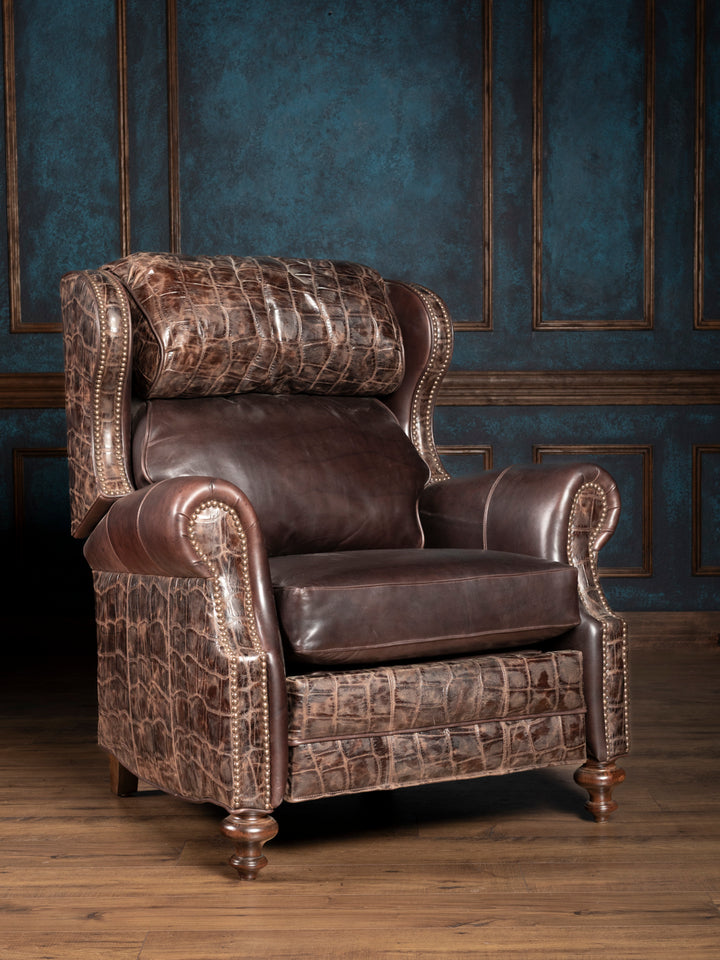
Rich Leather Furniture with Handcrafted Details
Red Leather Couch Collection

Luxury Western
High-end homes often embrace Molesworth-inspired craftsmanship, incorporating hand-tooled and embossed leather pieces that celebrate western traditions. Some pieces feature intricate cowboy and Native American motifs, such as bison, horses, and geometric tribal patterns, to honor the nation’s western heritage. Accents like brass nailhead trim and burled wood details add to their elegance.
Adaptations of Classics
Several classic designs were further adapted to suit western aesthetics. For example, the Chesterfield-style leather sofa originated in 18th-century Britain, but its adaptation into western saloons and luxury ranch homes occurred in the late 19th and early 20th centuries and still remains popular. Similarly, club chairs with deep button tufting, originally from English gentlemen’s clubs, found their way into western interiors, often reimagined with distressed leather and nailhead trim.
Wingback chairs, once a staple of European drawing rooms, were transformed with tooled leather and cowhide upholstery to fit the frontier aesthetic. Even the refined Louis XV-style fauteuil was adapted with rugged leathers and intricate Western-inspired carvings, blending old-world elegance with the untamed spirit of the west.
Classic and Modern Couches for a Luxurious Ranch
Blue Leather Couch Collection

Reclaimed Wood, Renewed for Modern Living
Reclaimed Wood Furniture Collection
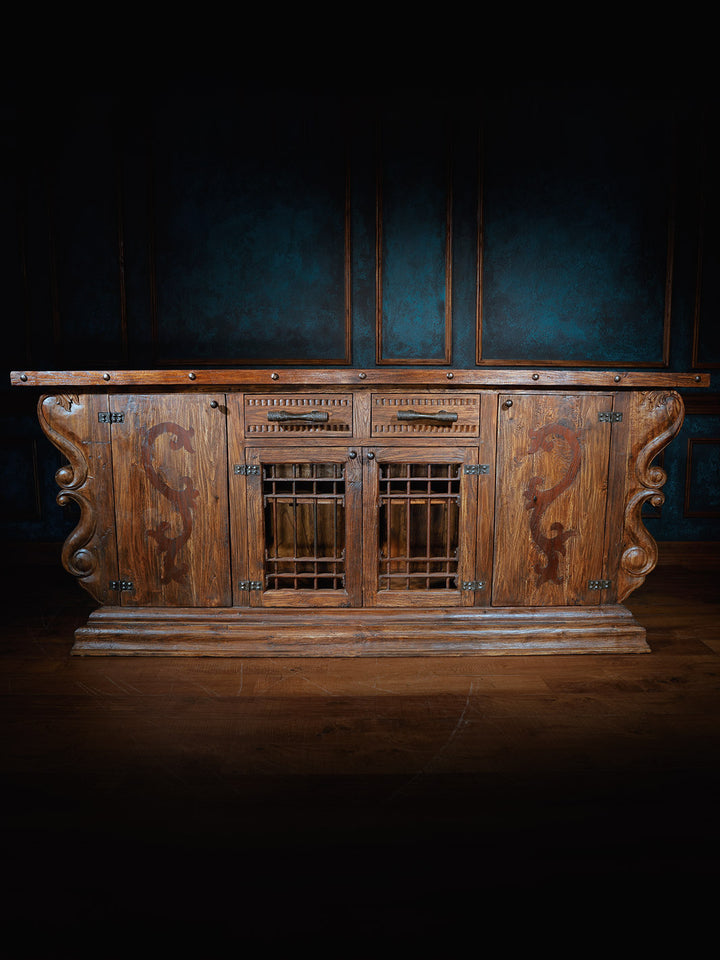
Sustainable and Ethical Materials
With a growing focus on sustainability, many designers prioritize ethically sourced leather and reclaimed wood. Collections like Jason Scott’s line integrate reclaimed materials with western design elements. Faux and vegan leather alternatives have also emerged, though natural top-grain and full-grain leather remain the most sought-after materials when it comes to western furniture.
At Runyon’s Fine Furniture, we have full-grain and top-grain leather in stock for our sofas that are not just long-lasting but also age beautifully and develop character over time, so feel free to discuss these options with us.
Design your Perfect, Customized Western Leather Furniture
Start your custom design today: Contact Our Design Team
Contact Our Design TeamThe Ever-Rising Popularity of Western Leather Furniture in Texas
Texas has always had a deep-rooted connection to leather, dating back to its Spanish and Mexican heritage. Western leather furniture naturally aligns with the state's cowboy culture, where leather has long been a staple for saddles, boots, and furnishings.
Appreciation for Elements That Reflect the State’s Western Traditions
The wide-open ranch homes of Texas are perfectly suited for large, oversized leather sofas, recliners, and sectionals that complement their spacious interiors. Texans appreciate the blend of ruggedness and refinement as elements like distressed leather, nailhead trim, and carved wooden frames reflect the state’s western traditions.
Explore Refined Furniture for Spacious Contemporary Living Rooms
Western Leather Recliners
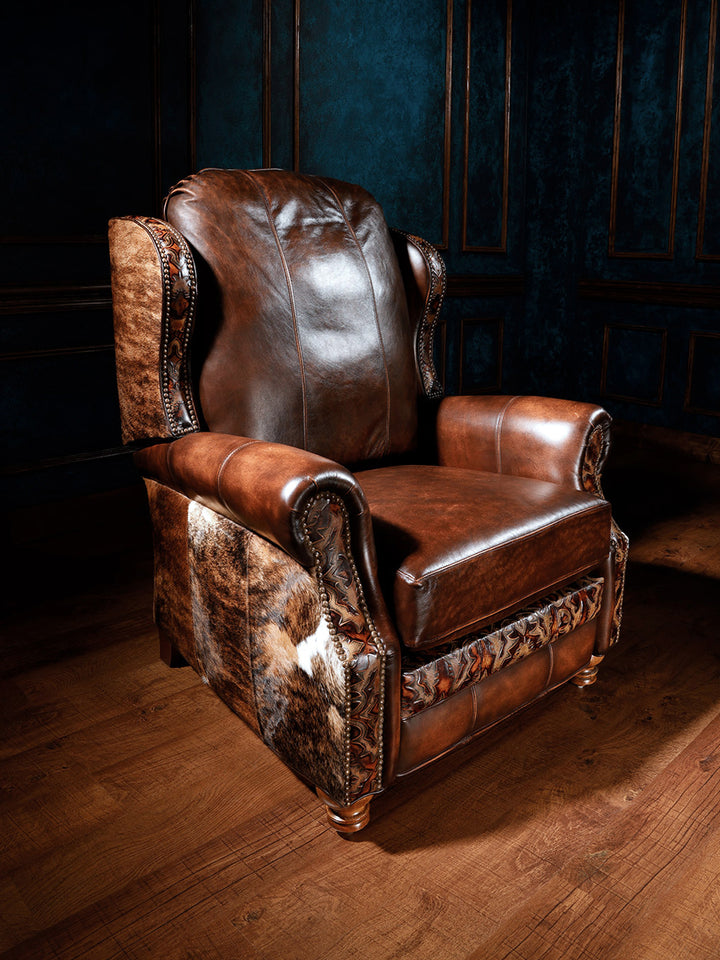
Grand Leather Sectionals with an Old West Charm
Western Sectional Sofas
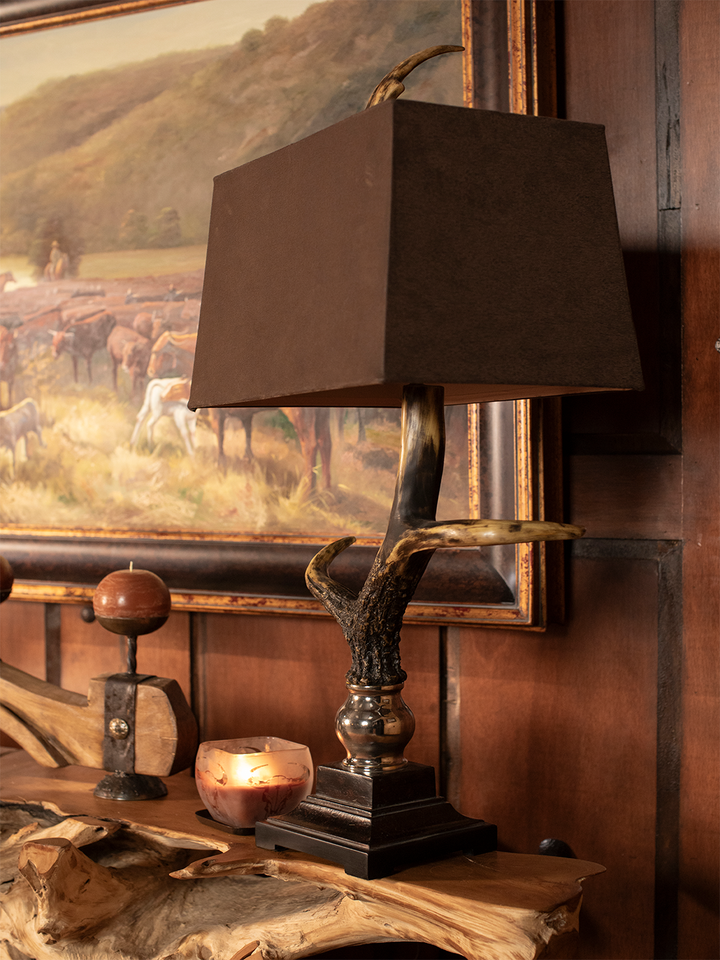
Influence of TV Westerns
The influence of TV Westerns has also played a significant role. Paramount Pictures' Yellowstone has revived an appreciation for western-style interiors. The show’s depiction of the Dutton Ranch has inspired many homeowners to incorporate rustic and elegant leather furniture that brings the spirit of the American West into their spaces. This aesthetic not only pays homage to tradition but also offers a unique way to set their home apart from the mainstream.
Craftsmanship Reminiscent of the Old West
Western leather furniture is more than just a style, it’s a living testament to a culture that values craftsmanship, durability, and the rustic appeal of an old, charming world. Whether it’s a hand-tooled armchair reminiscent of the Old West or a sleek yet rustic leather sectional, the enduring charm of western leather furniture continues to captivate homeowners, particularly in Texas. The legacy of frontier craftsmanship lives on, blending history with contemporary tastes.
Find the Perfect Western Leather Furniture in Fort Worth, TX
Whether you're updating your living room or furnishing a new home, visit Runyon’s Fine Furniture to explore our expertly crafted collection and bring the elegance of fine western-style furniture into your home.
Customize Your Home

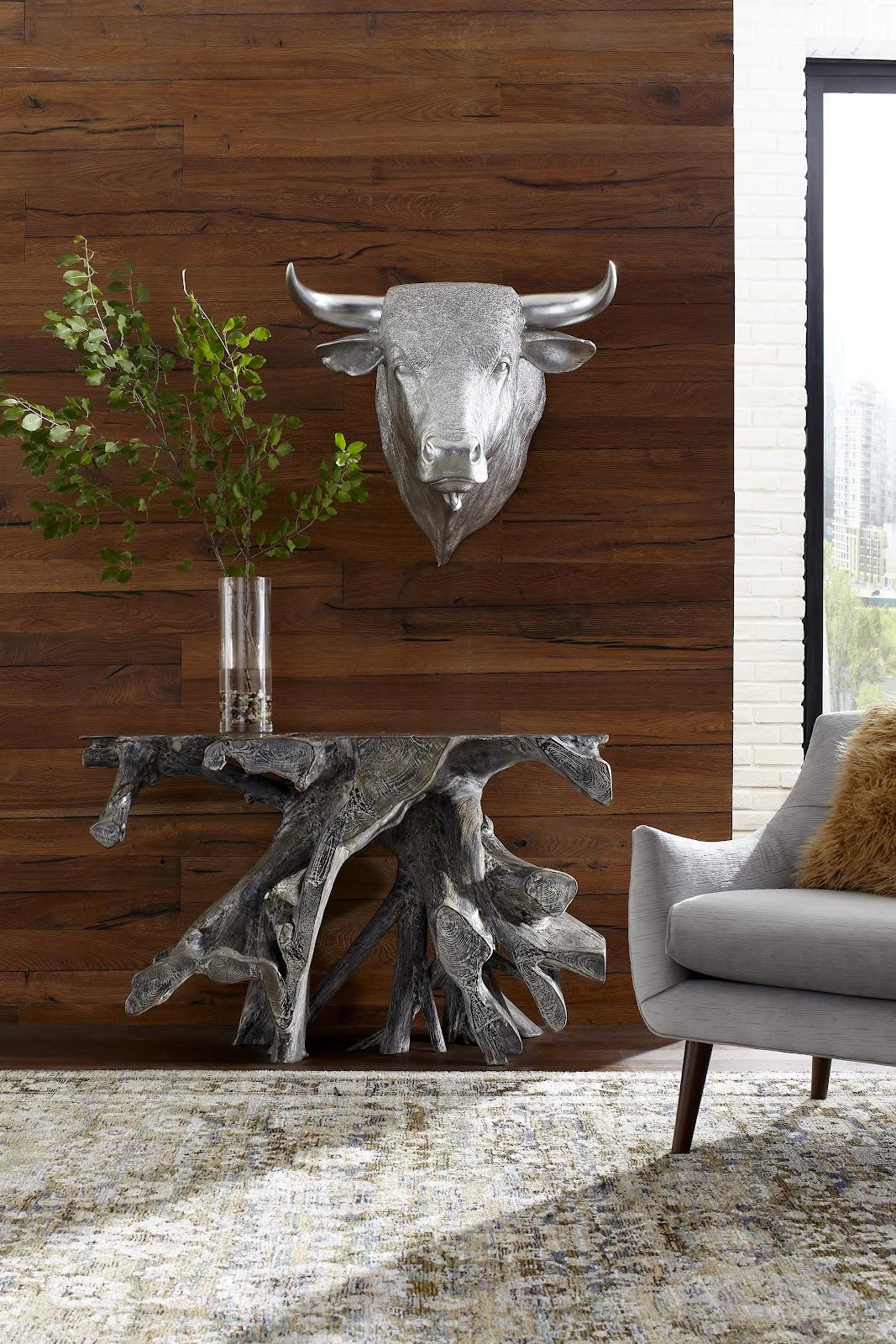
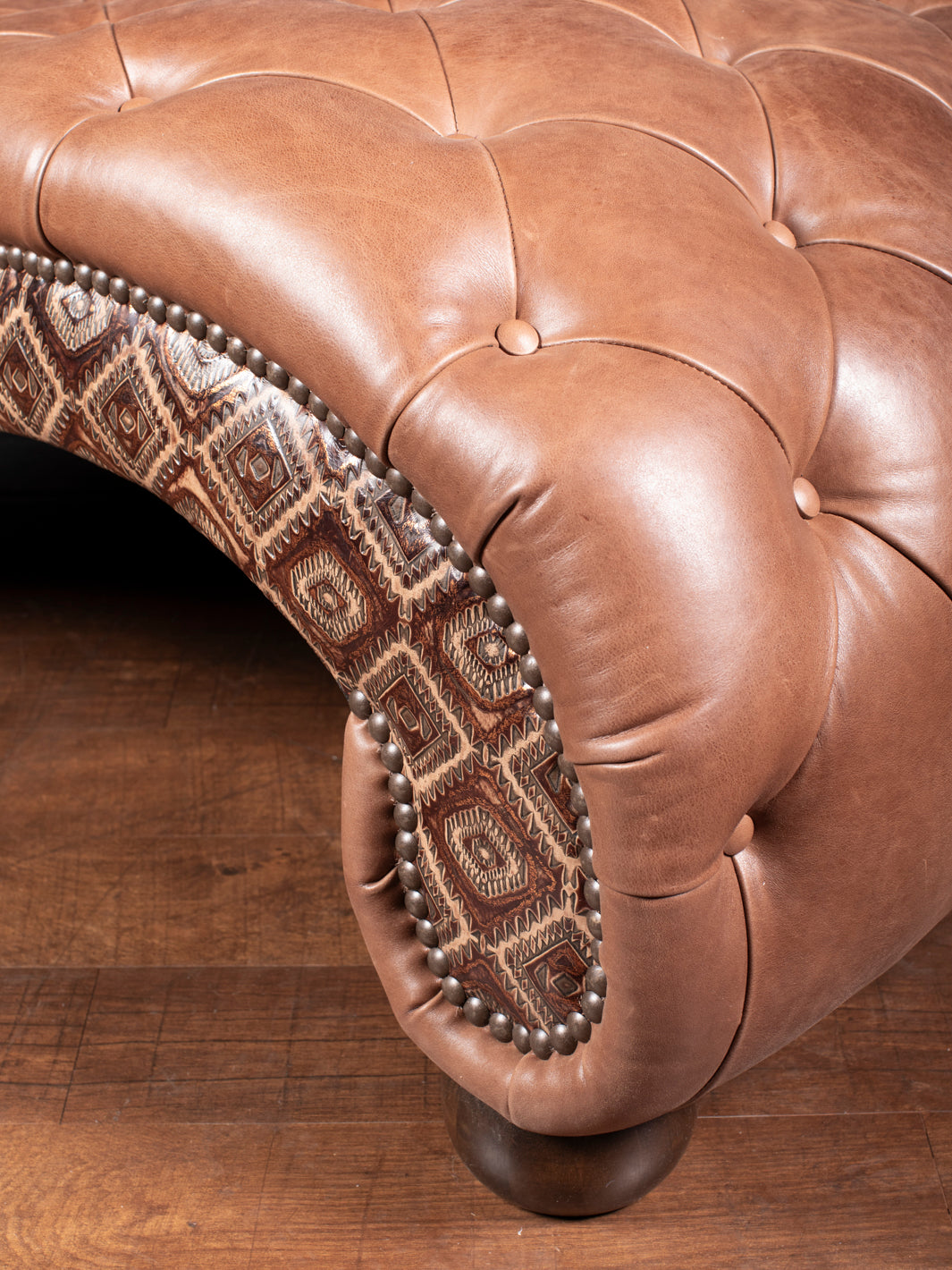
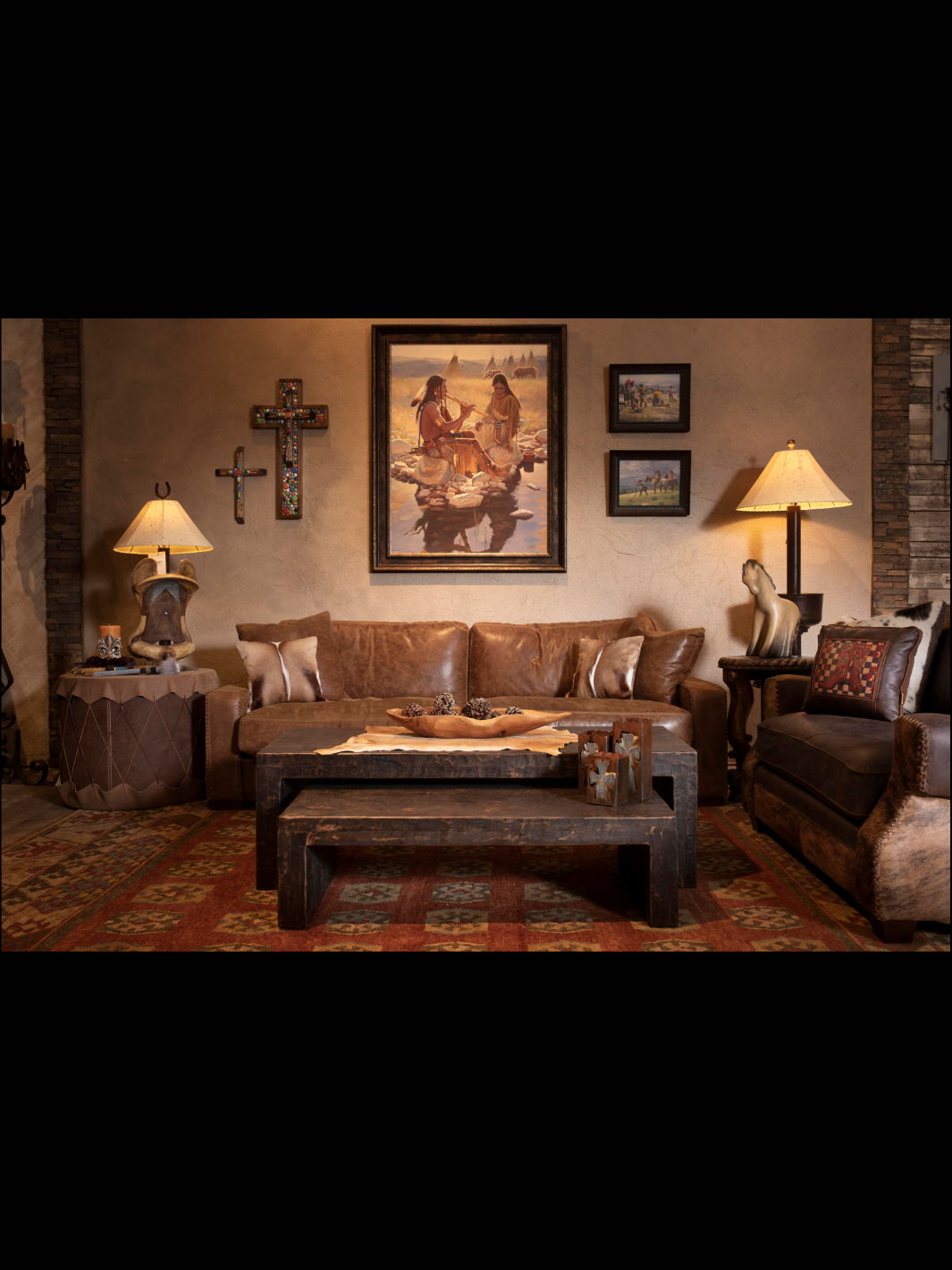
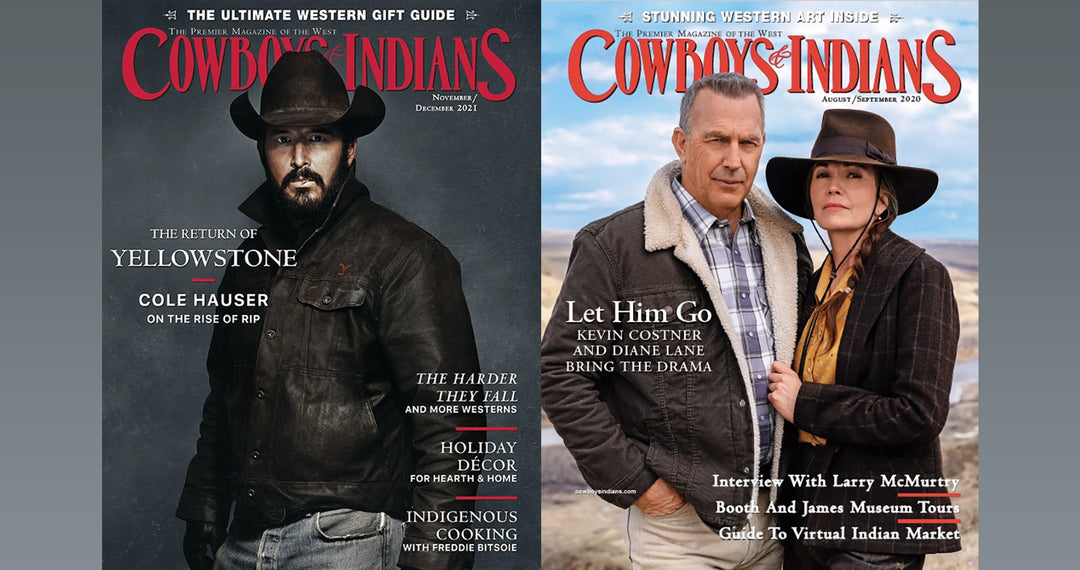
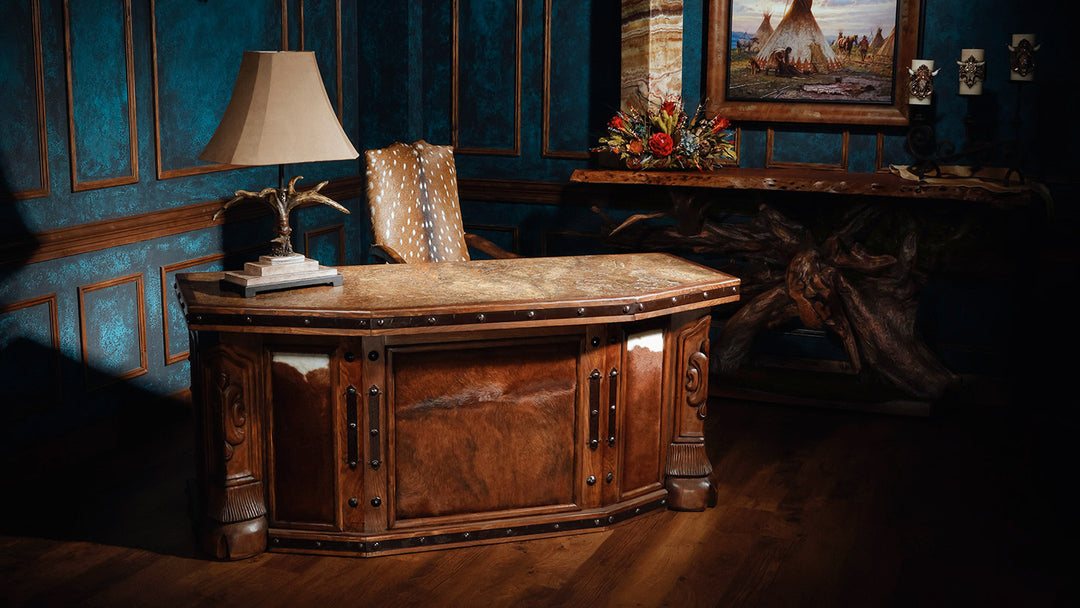
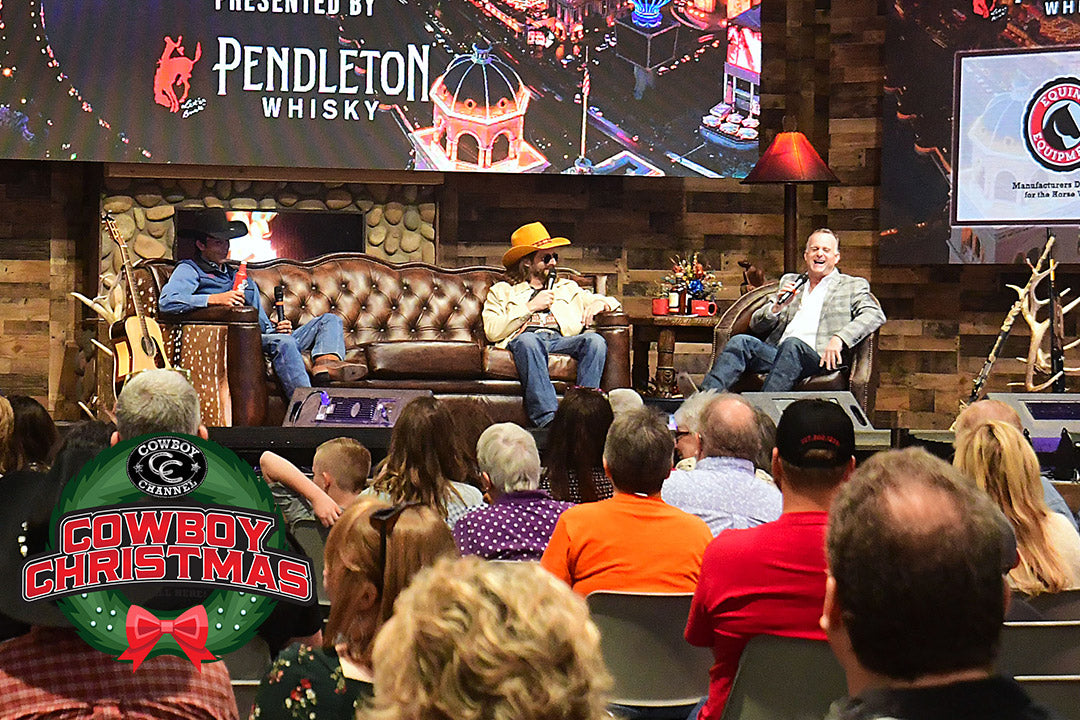
Leave a comment